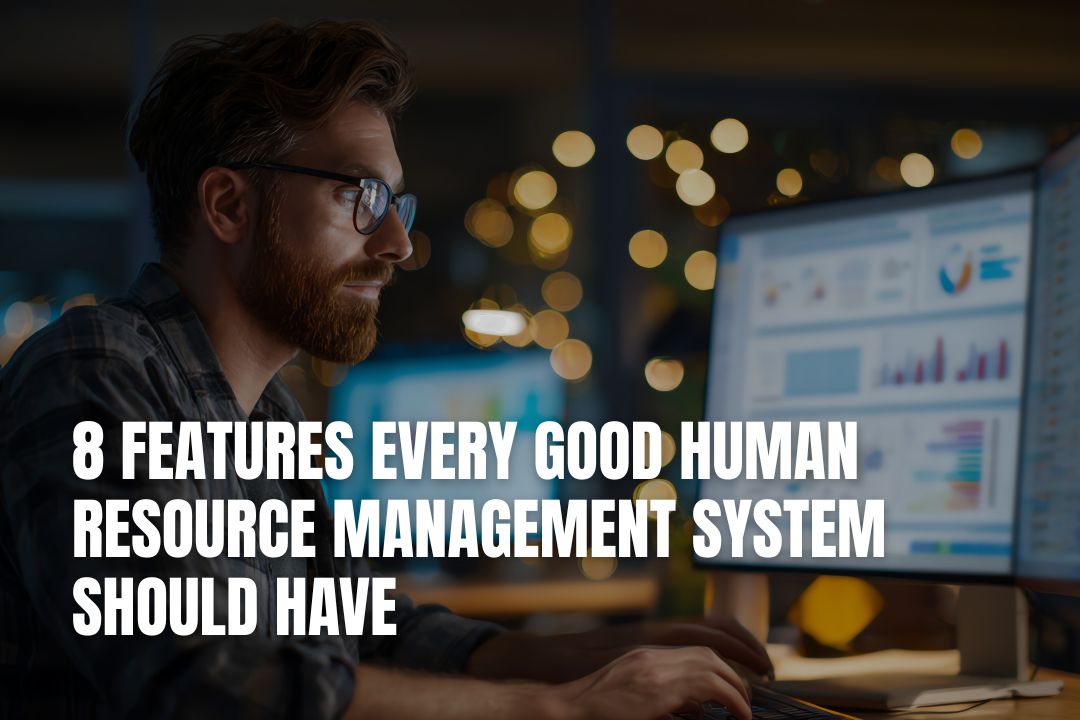
Have you ever felt that handling daily HR tasks becomes much smoother when everything is arranged properly in one place?
Many people feel the same, and that is why a Human Resource Management System plays an important role. It makes everyday work simple, helps teams stay organised, and supports a friendly work environment.
When an HRMS has the right features, the whole office feels more balanced and easier to manage.

A human resource management systems brings different HR activities together in a single platform. This makes it easier for HR teams to handle employee data, track performance, plan training, and manage attendance without any confusion.
With the right features, work becomes more peaceful and efficient, and employees also enjoy a better experience in the workplace.
Below are the eight features that a good HRMS should have to support business growth and smooth daily functioning.
Every business needs a proper place to store employee details. A good HRMS keeps all information neat and organised, making it easy to check anything you need.
This system usually stores details such as:
It helps HR teams save time and avoid manual searching. Everything stays clear, updated, and easy to access whenever required.
Tracking attendance becomes much easier when an HRMS offers a simple tool for it. Employees can mark their attendance, apply for leave, and check their leave balance without depending on anyone. HR teams also get a clear view of work patterns, timings, and schedules.
A clean attendance system supports:
It helps maintain a calm flow in daily work and brings more clarity to employee schedules.
Payroll work becomes very simple when the hcm software has an organised payroll feature. It automatically calculates salaries, allowances, and other amounts without any manual effort.
This helps HR teams by:
Employees also appreciate when their details stay accurate and clear every month. This feature helps maintain trust as everything stays smooth and timely.
Performance tracking helps employees understand how they are doing and what they can improve. A good HRMS offers easy tools to record goals, track achievements, and share feedback.
Some simple benefits include:
When employees get regular feedback, they feel more connected to their work and develop confidence in their efforts.
Training is an important part of work life. An HRMS with a learning feature makes it simple to arrange courses, track progress, and help employees learn new skills at their own pace.
Teams can use this feature to:
This helps employees grow faster and brings more positivity to the workplace.
Hiring the right people becomes much smoother with an HRMS. It keeps all applications, resumes, and candidate details in one organised place. HR teams can easily track every step of the hiring process and stay updated.
A recruitment feature supports:
This helps HR teams make confident decisions and maintain a pleasant experience for applicants.
Employee self-service is one of the most helpful features in an HRMS. It allows staff to handle small tasks on their own, such as updating personal details, checking salary slips, or making simple requests. This reduces HR workload and makes employees feel more independent.
This feature brings:
It creates a balanced work style where both employees and HR teams work smoothly without extra effort.
Every business wants to keep employee data safe. A good HRMS includes secure systems that protect all information from any unwanted access. Employees feel comfortable knowing their personal details are stored safely.
This feature helps maintain:
A secure system plays a strong role in building a peaceful work atmosphere.
A good Human Resource Management System helps bring clarity and comfort to everyday office work. When it includes the right features, HR teams save time, employees enjoy a friendly experience, and the whole office runs with better balance. These eight features support smooth operations, clear communication, and steady growth.
An employee self-service portal is valuable because it empowers your staff to handle their own administrative tasks, like updating personal information or checking pay slips. This reduces the workload for your HR department and gives employees faster access to their information.
An HRMS automates payroll by calculating salaries, allowances, and deductions without manual input. This minimises errors, ensures payments are on time, and keeps all financial records organised, which builds trust with your employees.
Yes, absolutely. Many systems include features for performance tracking and training management. These tools help you set goals, provide feedback, and offer learning opportunities, directly supporting your team's professional growth.
Data security is vital because your HRMS stores a large amount of sensitive personal and financial information. A secure system protects this data from unauthorised access, ensuring privacy and maintaining the trust of your employees. Consulting with a firm like Robin Waite Limited can help you assess the security aspects of different systems.
It centralises all recruitment activities. You can manage job postings, track applications, store CVs, and communicate with candidates from a single platform. This organisation makes the hiring process much smoother and more efficient for your HR team.